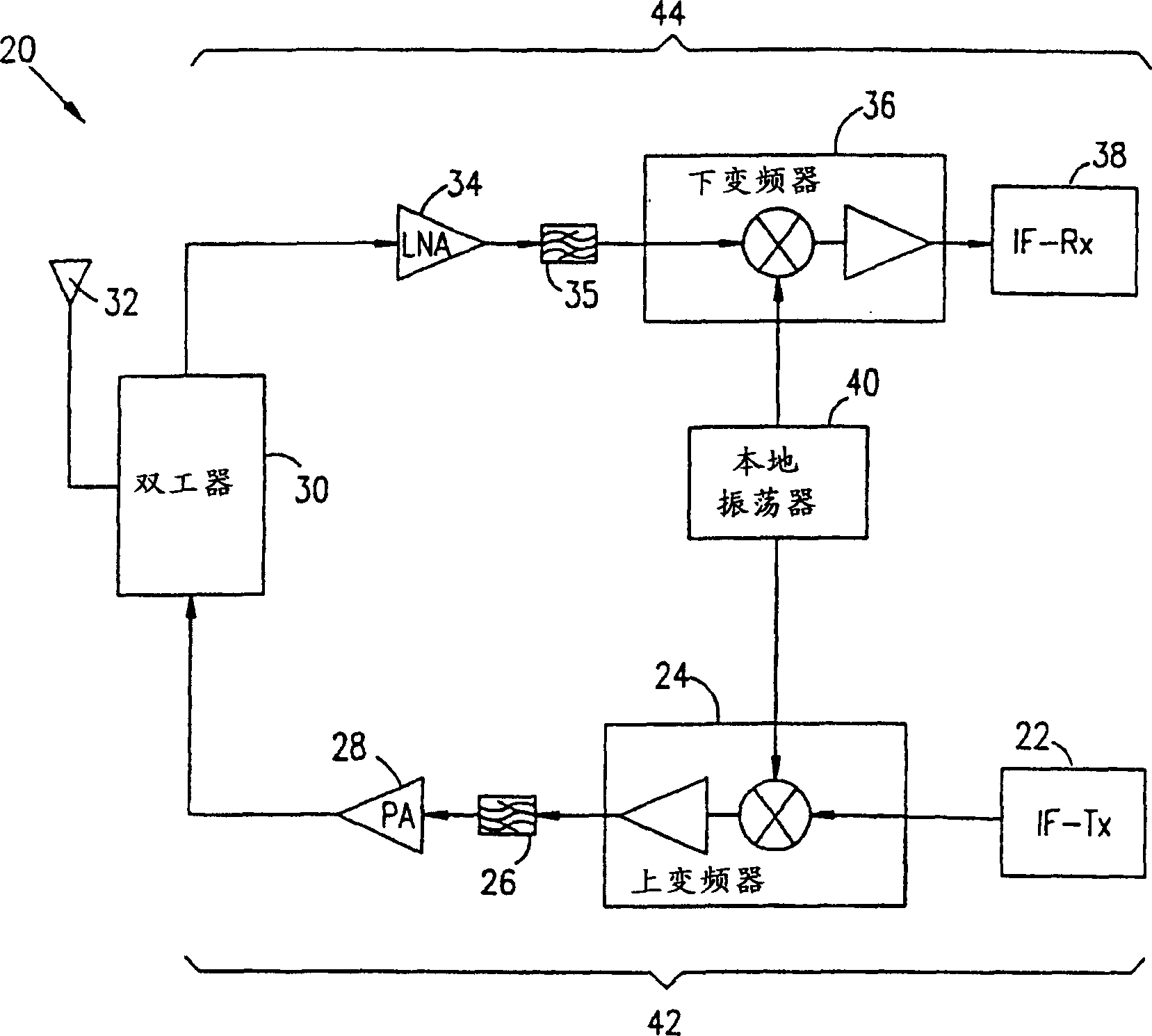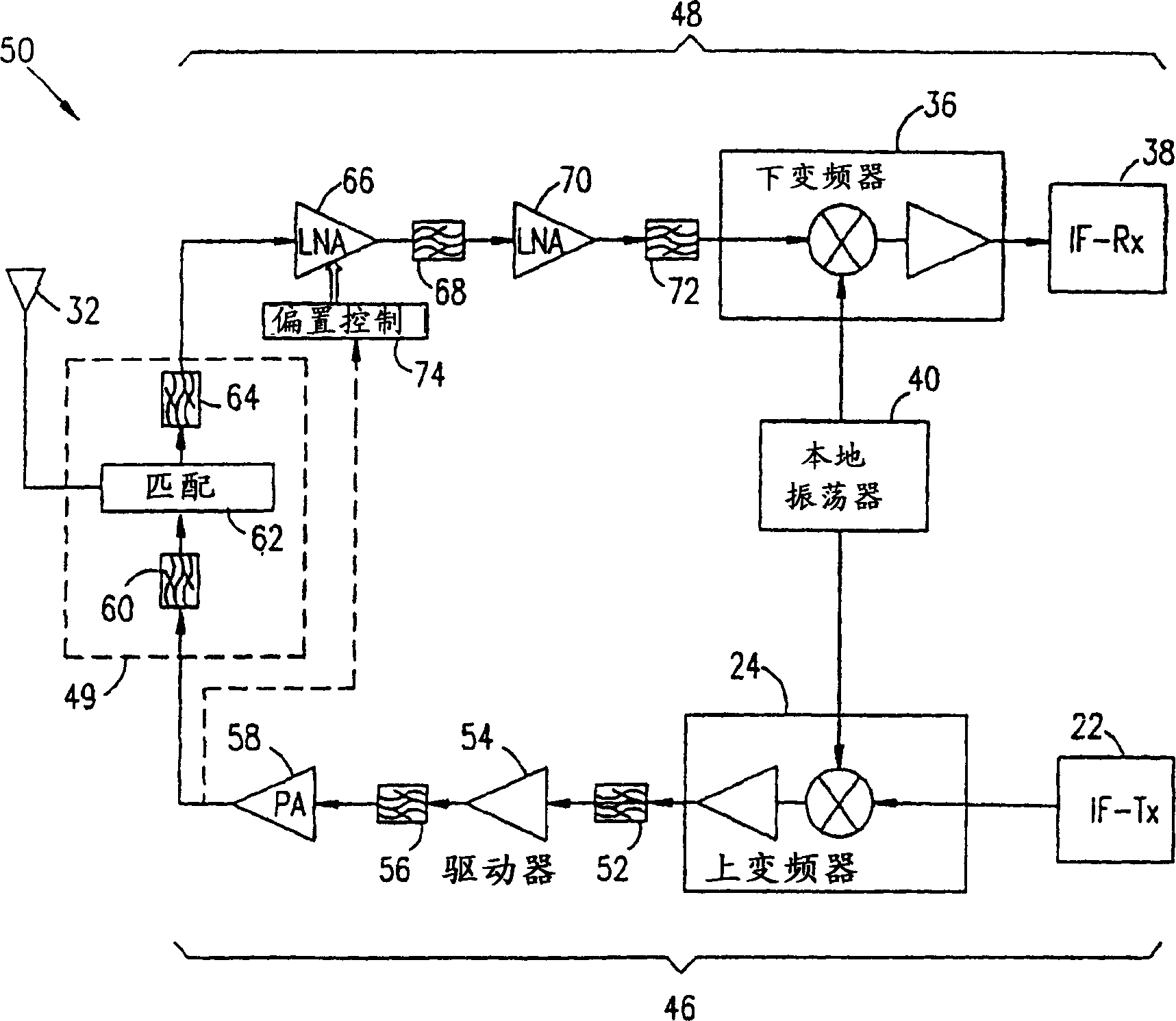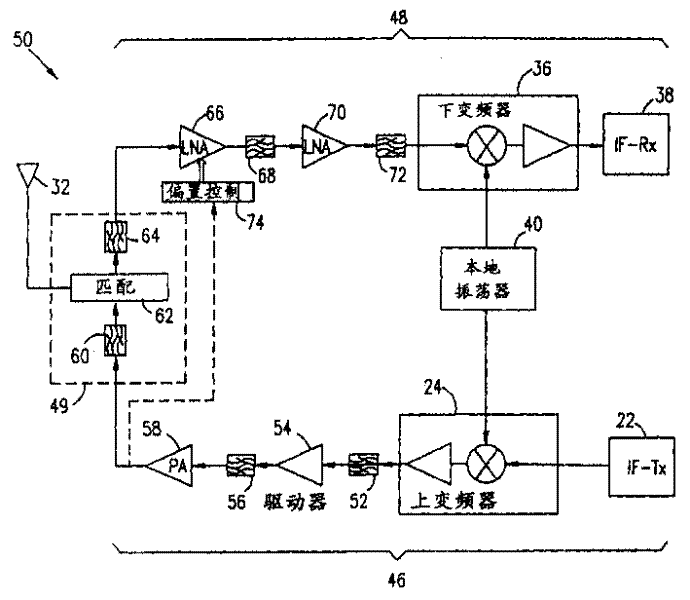Full-duplex transceiver with distributed duplexing function
A technology of transceivers and radio transceivers, applied in the direction of transmission systems, electrical components, etc., can solve the problems of unresolved Tx signals, excessive noise, leakage, etc.
- Summary
- Abstract
- Description
- Claims
- Application Information
AI Technical Summary
Problems solved by technology
Method used
Image
Examples
Embodiment Construction
[0043] now refer to figure 2 , figure 2is a block diagram schematically illustrating a wireless transceiver 50 according to a preferred embodiment of the present invention. Transceiver 50 includes Tx link 46 and Rx link 48 , which are coupled to antenna 32 via duplex circuit 49 . As will be described below, the Tx and Rx links and duplexing circuitry 49 are substantially different from their counterparts in transceiver 20 (FIG. 1), so that transceiver 50 can match or outperform prior art transceivers. Its performance, while existing technology transceivers are larger in size and more expensive to manufacture.
[0044] In this example, the transceiver 50 is designed to operate in the NMT450 cellular frequency band (Tx; 450-455MHz, Rx: 460-465MHz), but it can be easily adapted to operate in other cellular frequency bands or in essentially any other work on radio frequency bands. For brevity, certain standard parts of the transceiver, such as isolators in the Tx link, are cha...
PUM
 Login to View More
Login to View More Abstract
Description
Claims
Application Information
 Login to View More
Login to View More - R&D
- Intellectual Property
- Life Sciences
- Materials
- Tech Scout
- Unparalleled Data Quality
- Higher Quality Content
- 60% Fewer Hallucinations
Browse by: Latest US Patents, China's latest patents, Technical Efficacy Thesaurus, Application Domain, Technology Topic, Popular Technical Reports.
© 2025 PatSnap. All rights reserved.Legal|Privacy policy|Modern Slavery Act Transparency Statement|Sitemap|About US| Contact US: help@patsnap.com



